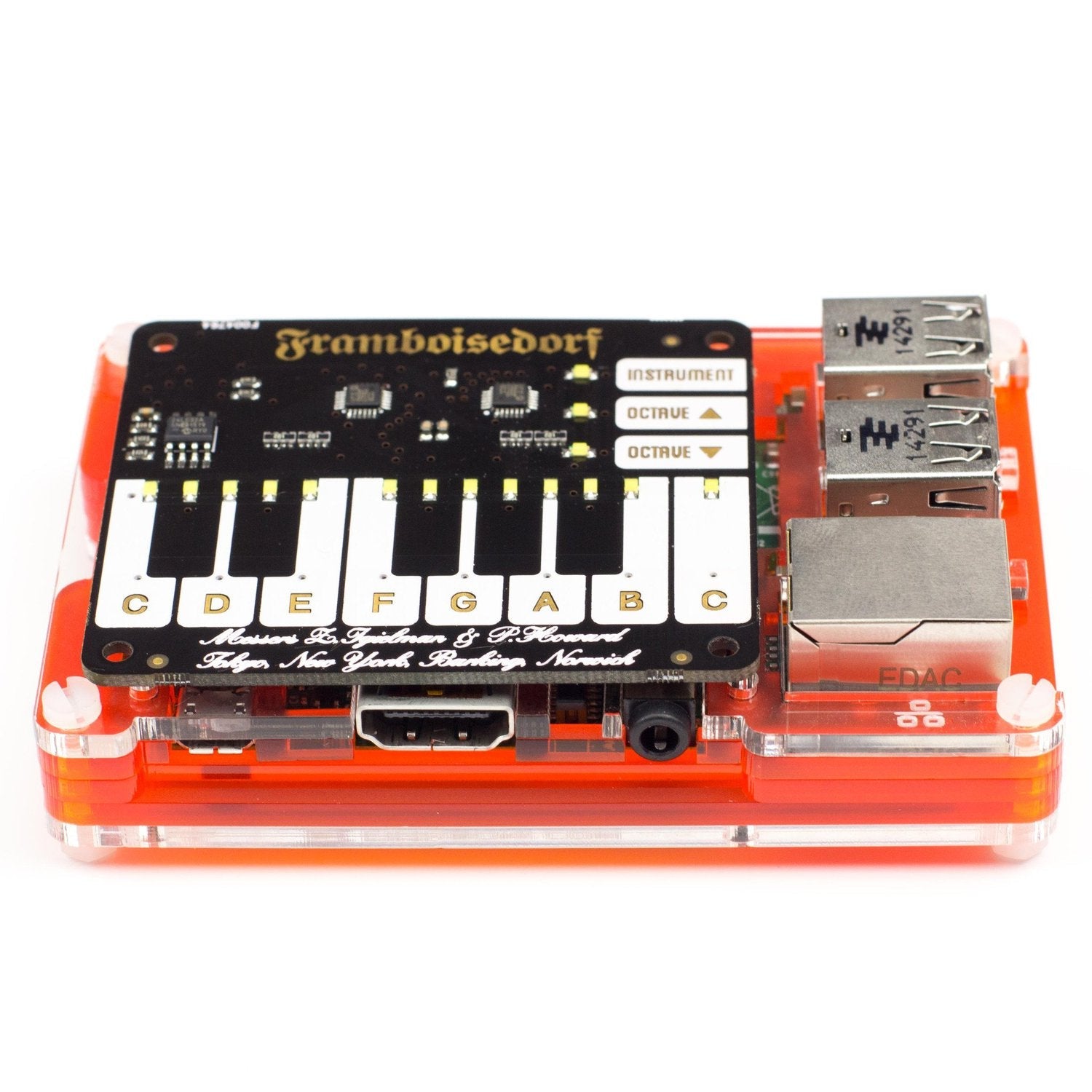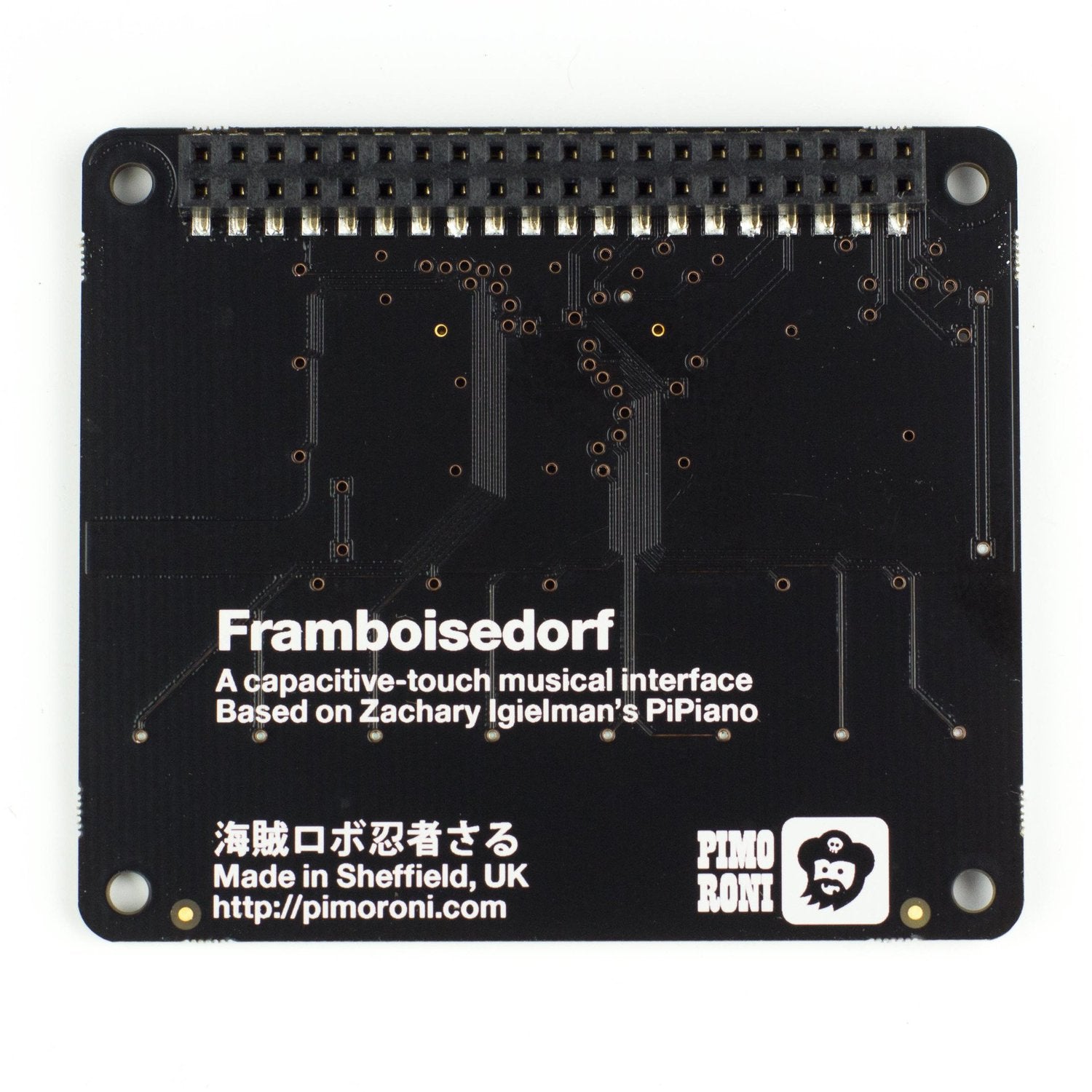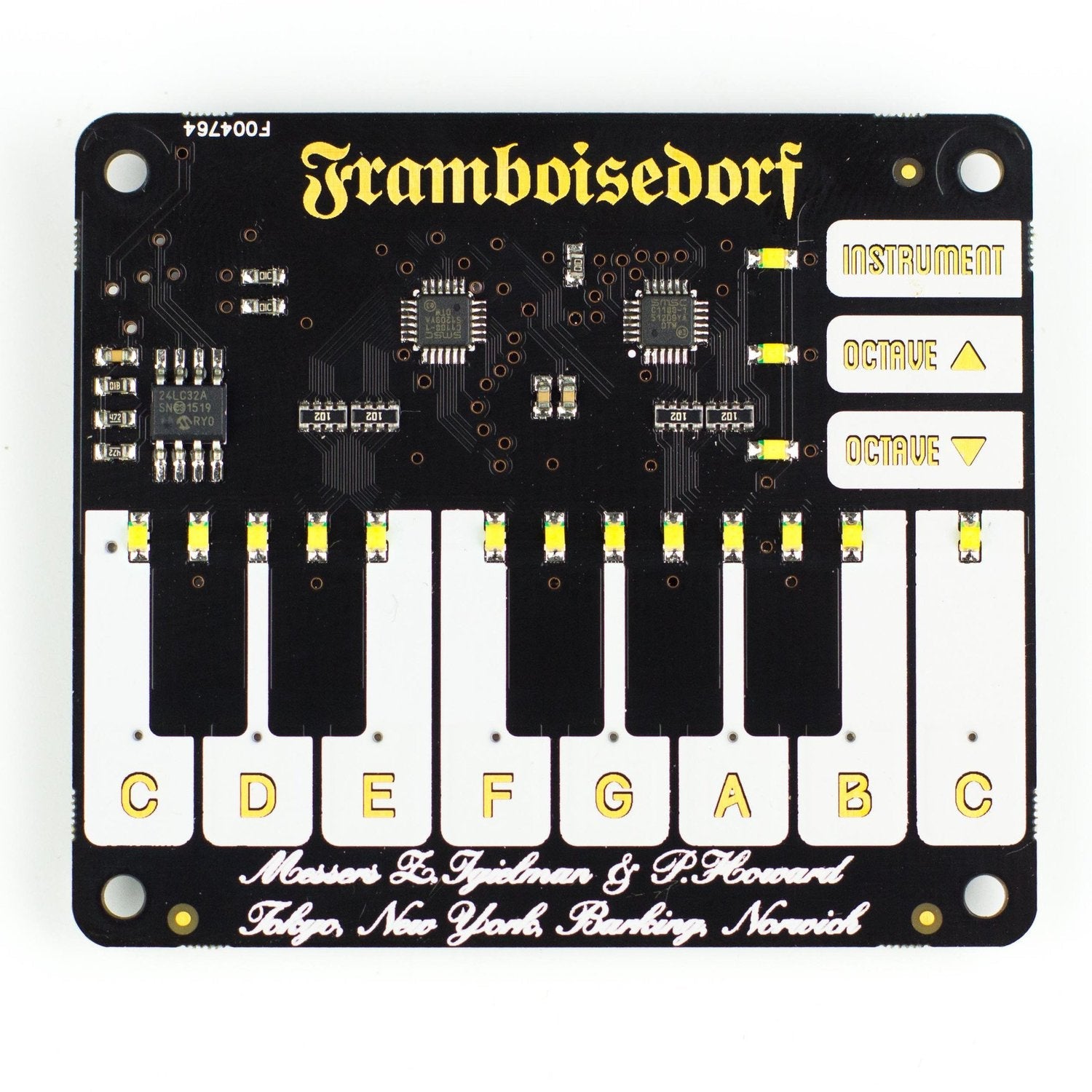Unlock your inner musical genius with the Miniature Piano HAT, a perfect musical companion for your Raspberry Pi! Inspired by Zachary Igielman's PiPiano and crafted with his approval, this touch - sensitive piano add - on comes with the signature Pimoroni polish. Play music in Python, control software synths on your Pi, and manage hardware synthesizers. As Michael Horne said, it's a work of art that looks, feels, and acts slick. The MagPi called it a great way to unleash your musical tendencies and a board for musical adventures. Features include 16 capacitive touch pads, 13 piano keys for a full octave, octave up/down buttons, an instrument cycle button, 16 bright white LEDs controllable via Python, 2x Microchip CAP1188 capacitive touch driver chips, MIDI control for software and hardware synths, a clear pinout, compatibility with multiple Raspberry Pi models, a Python library, and it comes fully assembled. Our detailed Python library with useful examples helps you explore its functions. There's a learn - to - play example where LEDs guide you on key - pressing, MIDI examples for playing with software synths, a PyGame example with great samples, and an 8 - bit synth in pure Python. You can also use it as a MIDI controller via a USB to MIDI adapter. Note: Our software doesn't support Raspbian Wheezy.



Using the Miniature Piano HAT is easy. First, make sure your Raspberry Pi is one of the compatible models like Raspberry Pi 3B+, 3, 2, B+, A+, Zero, or Zero W. Connect the Piano HAT to your Pi according to the provided pinout. Then, install the Python library. You can use the learn - to - play example to start. The LEDs will show you which keys to press, so just follow them and you'll be playing music in no time. For using it with software synths like Sunvox or Yoshimi, check out the MIDI example in the Python library. If you want to use it as a MIDI controller for your hardware synth, connect a USB to MIDI adapter. Remember, our software does not work with Raspbian Wheezy, so avoid using it on that system. To maintain your Piano HAT, keep it in a clean and dry place. Don't expose it to extreme temperatures or moisture. If you notice any issues, check the connections first and refer to the Python library documentation for troubleshooting.